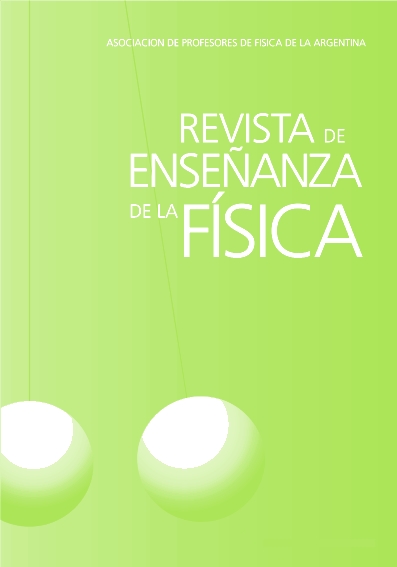Pedagogic analysis of a situation: movement in two dimensions
DOI:
https://doi.org/10.55767/2451.6007.v29.n2.18803Keywords:
Didactic Analysis, Movement, Learning concepts.Abstract
We describe the results obtained by exploring the didactic potential of an activity. We performed this experience by developing a didactic sequence for the theme: Body Movement in two dimensions. We emphasize the analysis of the activity: Movement of a soccer ball. This helped us to establish the sequence students should follow in addressing their description, and to develop the conceptual knowledge and skills considered in the course objectives. It also allowed us to identify the possible interventions of the instructor of the course.References
ESIME–IPN (2003). Programa del curso Física Clásica de ICA. http://www.esimez.ipn.mx/OfertaEducativa/Documents/ingenieria_en_control_y_automatizacion/pe_1er_semetre/02–FISICA_CLASICA.pdfSitio consultado el 16 de octubre de 2012.
Gómez, P. (2002). Análisis didáctico y diseño curricular en matemáticas. Revista EMA, 7(3), 251–292. http://funes.uniandes.edu.co/1537/ Sitio consultado el 26 de junio de 2015
Lesh, R. (2010). Tools, Researchable Issues & Conjectures for investigating what it means to understand Statistics (or other topics) meaningfully. Journal of Mathematical Modeling and Application, 1(2), 16–48.
Lesh, R. y Doerr, H. M. (2003). Foundations of a Models and Modeling perspective on mathematics teaching, learning, and problem solving. En Richard Lesh y Helen M. Doerr (Eds.) (2003). Beyond Con-structivism. Models and modeling perspectives on mathematics problem solving, learning, and teaching. Mahwah, NJ: Lawrence ErlbaumAssociates, pp.3–35.
Polya, G. (1989). Cómo plantear y resolver problemas. México: Trillas.
Shulman, L. S. (2005).Conocimiento y enseñanza: Fundamentos de la nueva reforma.Profesorado. Revista de currículum y formación del profesorado, 9(2), 1–30 https://www.ugr.es/~recfpro/rev92ART1.pdfSitio consultado el 17 de enero de 2007.
Simon, M.A. (1995). Reconstructing mathematics pedagogy from a constructivist perspective. Journal for Research in Mathematics Education, 26, 114–145.
White, N. y Mesa, V. (2014). Describing cognitive orientation of Calculus I tasks across different types of coursework. ZDM Mathematics Education 46, 675–690. DOI 10.1007/s11858–014–0588–9.https://link.springer.com/journal/11858/46/4/page/1Sitio consultado el 12 de enero de 2014.
Downloads
Published
Issue
Section
License
Copyright (c) 2017 César Cristóbal Escalante, Verónica Vargas Alejo, Martha Leticia García Rodríguez

This work is licensed under a Creative Commons Attribution-NonCommercial-NoDerivatives 4.0 International License.
Aquellos autores/as que tengan publicaciones con esta revista, aceptan los términos siguientes:Los autores/as conservarán sus derechos de copiar y redistribuir el material, bajo los términos estipulados en la Licencia de reconocimiento, no comercial, sin obras derivadas de Creative Commons que permite a terceros compartir la obra bajo las siguientes condiciones:
- Reconocimiento — Debe reconocer adecuadamente la autoría, proporcionar un enlace a la licencia e indicar si se han realizado cambios. Puede hacerlo de cualquier manera razonable, pero no de una manera que sugiera que tiene el apoyo del licenciador o lo recibe por el uso que hace.
- NoComercial — No puede utilizar el material para una finalidad comercial.
- SinObraDerivada — Si remezcla, transforma o crea a partir del material, no puede difundir el material modificado.
- Los autores/as podrán adoptar otros acuerdos de licencia no exclusiva de distribución de la versión de la obra publicada (p. ej.: depositarla en un archivo telemático institucional o publicarla en un volumen monográfico) siempre que se indique la publicación inicial en esta revista.
- Se permite y recomienda a los autores/as difundir su obra a través de Internet (p. ej.: en archivos telemáticos institucionales o en su página web) antes y durante el proceso de envío, lo cual puede producir intercambios interesantes y aumentar las citas de la obra publicada. (Véase El efecto del acceso abierto).










